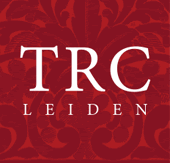From the 1970s onward Western-style clothing has become more widely available to all layers of Middle Eastern society. T-shirts and jeans, suits and sweaters are worn next to local-style garments and adapted to fit local tastes. These Western-style garments are produced locally or in the Far East and are part of a global phenomenon. In addition, since the 1980s an international Islamic-style fashion has developed, that combines modesty with modern stylishness.
 An Egyptian lady wearing Western style clothing and a transparent face veil locally known by the Turkish word yashmak. Early 20th century (TRC 2017.1841). Click illustration for TRC catalogue entry.There are many local versions that betray the wearer’s nationality, but also styles that cross borders, such as ‘Islamic chic’. The TRC houses a group of garments created by the Lebanese fashion designer, Elissar W. Hikal. She uses men's kufiyah's, the traditional local headcloth for men, to make women's garments and textile jewellery.
An Egyptian lady wearing Western style clothing and a transparent face veil locally known by the Turkish word yashmak. Early 20th century (TRC 2017.1841). Click illustration for TRC catalogue entry.There are many local versions that betray the wearer’s nationality, but also styles that cross borders, such as ‘Islamic chic’. The TRC houses a group of garments created by the Lebanese fashion designer, Elissar W. Hikal. She uses men's kufiyah's, the traditional local headcloth for men, to make women's garments and textile jewellery.
In addition to global fashions, local dress traditions still play an important role, whether worn on a day-to-day basis or as part of folklore. This exhibition shows just a snippet of the great diversity of religious and ethnic groups in the Middle East, and the ways in which they display their identity.


